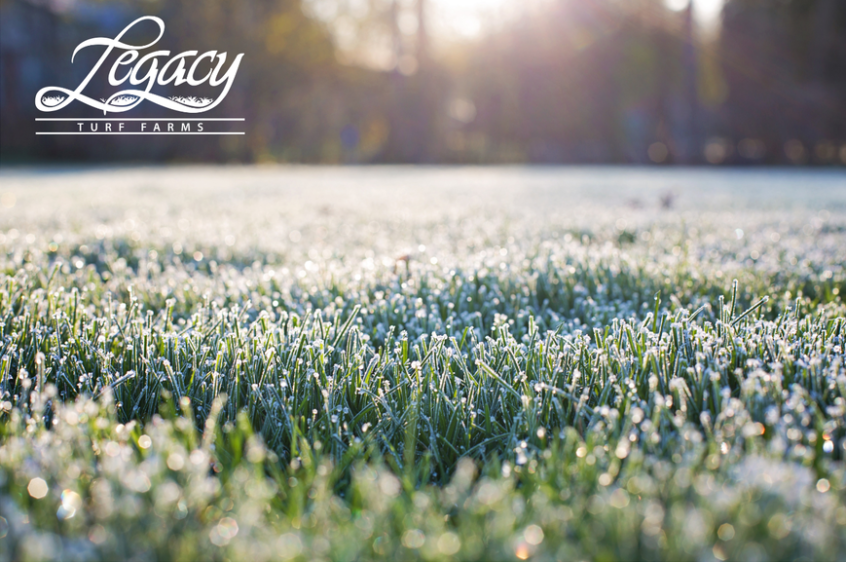Is frost a concern for my Bermuda or Zoysia?
When a temporary frost sweeps across your lawn, there are potential side effects that could take place. Here in Georgia, we don’t have too much to worry about in terms of hard frost and snow. But, freezing temperatures can still cause stress to your turf grass if not handled properly. Most damage can be avoided if you are conscious of these best practices.
What Can I Do?
1. Wintertime Watering
Regular watering is essential for ensuring a healthy plant throughout the dormant period. Our main objective during the colder months is to make sure that the sod does not dry out. Dry, cold winds are what makes your sod most susceptible to dying out or not coming back in the spring. Yes, it’s still a good idea to winterize your irrigation system. But using a traditional oscillating sprinkler on your lawn or running your irrigation a few times a month is what will keep your sod moist enough to survive the winter.
Be careful of over watering — we do not want to encourage fungus, especially in zoysia grass! Water just enough to keep the ground flexible, and to keep the sod, especially new sod, from drying out.
2. Avoid Trampling All Over Frosty Lawns
As we have discussed, turfgrass is extremely susceptible to physical trauma while frozen. Therefore, avoid walking on your grass while frost is on the ground. Definitely skip the early morning mowing during this season (you shouldn’t really have to mow your warm season turf beyond October in the Southeast). Mowing can be particularly damaging during frost conditions.
3. Fertilize Before The First Frost
If you are planning ahead, your last fertilizer application should be well before (3-4 weeks) the first frost of the year. In Georgia, we usually see an overnight frost in late October or early November. This final late fertilization can help the plant build up the nutrients that it needs to withstand frosts and wake up out of the dormant period healthy and green in the spring.
